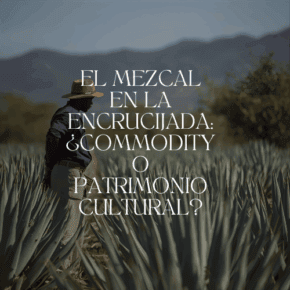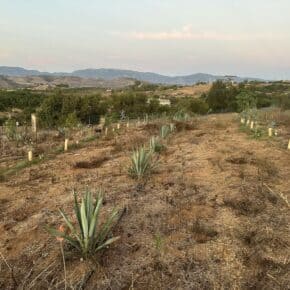A look at how effective vinaza solutions actually are
Mezcal production poses a laundry list of sustainability issues, both environmental and cultural. Here we take a closer look at the efforts to combat the environmental threat of vinazas, the wastewater byproduct of mezcal production. To address these challenges, researchers have been investigating various treatment methods, aiming to develop sustainable and effective solutions. While there has been significant progress in developing treatment methods, the effectiveness of these treatments at a scale commensurate with the mezcal industry is far from perfect.
Vinazas are the wastewater generated during the production of mezcal and other alcoholic beverages. They contain high levels of organic matter, phenols, total solids, acidity, and have a high temperature upon discharge. This makes them highly polluting and harmful to the environment. Improper disposal of vinazas can lead to soil degradation, reduced seed germination, and water eutrophication (overgrowth of algae on the surface of water), which disrupts the natural balance of aquatic ecosystems. The elevated temperature of vinazas upon discharge can further exacerbate these environmental impacts.

Various methods have been explored for the processing of vinazas. The study by Robles-González et al. (2018), published by Benemérita Universidad de Puebla (BUAP) evaluated biological and physicochemical treatments, as well as methods that combine the two approaches (read the full report here.) Among the biological treatments, the use of activated mud which uses microorganisms in aerobic conditions, showed promising results. The study reported an average removal efficiency of 69.6% for organic matter from the activated mud treatment. Another method investigated was fungal treatment, where ligninolytic fungi such as Trametes troggi and Pleurotus ostreatus were used to digest organic matter. These fungi showed removal efficiencies of 61.4% to 67.9%. Anaerobic digestion has also been studied, achieving an average organic matter removal efficiency of 81% when treating 10% vinazas concentration. However, challenges arise when treating higher vinazas concentrations, as the removal efficiency drops significantly.
When considered independently and in combination, the results are relatively promising, with the most notable results from a combination treatment plan that uses elements from each type of treatment. However, the real life implementation is very different from controlled scientific experiments. Despite these advancements in treatment technologies for vinazas, the outlook for large-scale implementation and treatment remains challenging.
Scalability is the main concern, as the existing mezcal industry requires a treatment system that can handle the substantial volume of vinazas produced. The study by Villalobos-Castillejos (2009) demonstrated the limitations of anaerobic digestion in treating higher concentrations of vinazas, which would be the reality for larger producers and/or those working year round. Another consideration is the cost for equipment, such as tanks and pumps, which are added expenses for producers. Similarly, not every distillery is set up to accommodate a treatment area. So even the best-case treatment scenario that we have today is largely theoretical and falls seriously short in practice.
The fact remains that vinazas generated from mezcal production pose a significant environmental challenge. Further research and development are needed to validate the results and explore sustainable and economically viable solutions for large-scale treatment. It is also crucial to continue exploring innovative approaches to minimize the environmental impact of mezcal production and ensure a sustainable future for the industry.
But it’s not all on local scientists to figure this out. It is essential for mezcal enthusiasts to recognize the environmental impact, especially in Oaxaca. Being mindful of how and where we travel and our footprint from those travels is a good start. Supporting grassroots mutual aid projects that prioritize the well-being of local communities and the environment can also make a tangible difference. Choosing quality over quantity when it comes to drinking mezcal can lead to a more enjoyable and meaningful experience, while also reducing the overall demand and potential strain on natural resources. And finally, ask questions to better understand what brands are doing to minimize their impact on the environment. By embracing these principles, mezcal enthusiasts can actively contribute to the preservation of Oaxaca’s ecosystem and other mezcal producing regions, and support a more sustainable future for mezcal and the communities that produce it.












Leave a Comment